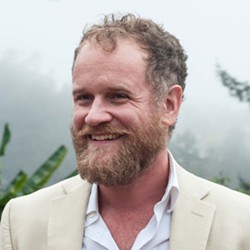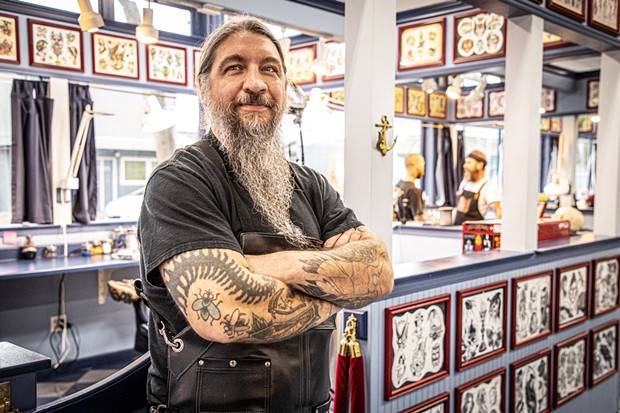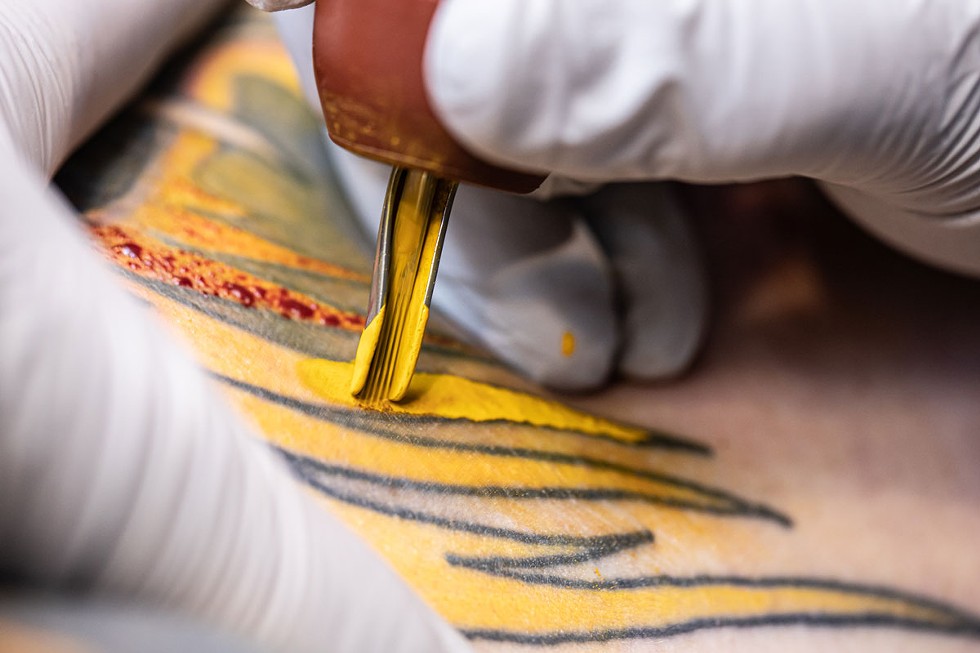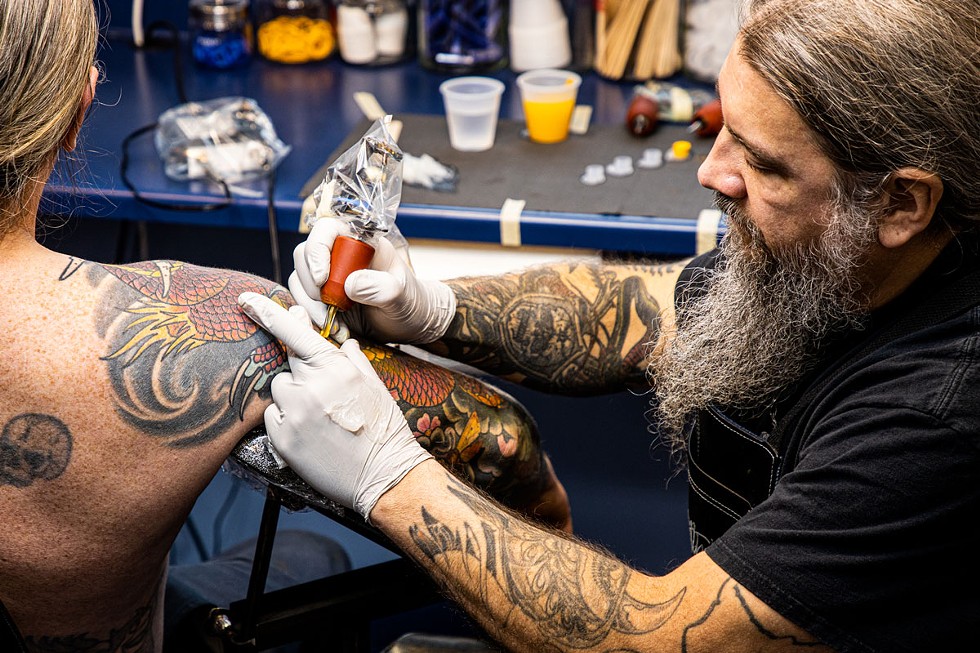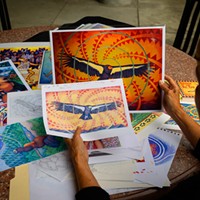On Sept. 1, 1994, Henry Krüger worked his first day as a professional tattoo artist. But that was hardly the first time he had ever held a tattoo gun and given out some ink.
“I got my first tattoo in 1987, the day after I turned 17,” the fifth-generation Humboldt native said in a booth in his Eureka shop Sailor’s Grave Tattoo. “My great-grandparents owned a farm on the land that is now Cutten Elementary School. When my great-grandmother got ill, my grandparents rented out her house and the first couple who lived there was from San Diego. The man was a tattoo artist but he didn’t have anyone to work on him, so he taught me. I gave him a dragon on his forearm and he gave me this goat’s head on my shoulder. I was the first one of my friends who got a tattoo. Back then, you’d only see tattoos on World War II vets and old bikers.”
Henry grew up as a consummate metal head and a fan of the artwork that accompanied record sleeves and show fliers. Pushead, the singer and artist from the band Septic Death, was a big influence on him. So was the graphic illustrator turned tattooist Greg Irons, due to Krüger’s early obsession with an album that his stepfather owned, Jerry Garcia’s bluegrass outfit Old and in the Way’s first self-titled record. “I didn’t care for the music at all but I just loved the cover art by Irons. It just resonated with me.”
Henry didn’t take the idea of tattooing professionally seriously until he moved to Seattle to attend art school and had an epiphany from a class with the brilliant, notorious and iconoclastic artist (and contemporary of Humboldt’s Morris Graves) William Cumming.
“I went to art school for two years," said Krüger. “And about a month before I graduated my class, we got a lecture from Cumming.” The teacher was late to the live figure drawing class and in a bad mood and went around the room asking everybody what they wanted to do with their work. “A lot of people said that they wanted to get into commercial work and graphic design. And Cumming said that the best artists were the original artists, the cavemen who made their paintings without lessons or critics or anything besides their own inspiration. They just did it. After that, a bunch of my classmates just quit school, myself included. I said screw this, I want to be a tattoo artist.”
Krüger eventually landed a job at one of Seattle Tattoo Emporium owner Pete Stephens’ shops and spent the next several years honing his craft between gigs in Seattle and Olympia. During that time, he discovered what he liked and disliked about the sometimes grimy world of tattoo parlors, and slowly crafted a vision for a business of his own — one that would blend the ambience of the old school with modern cleanliness and an open layout. On July 4, 2010, he opened Sailor’s Grave with his wife Melissa Krüger. The shop is housed in an old building that has served as everything from a soda bottling plant to a jewelry store and the clean lines of the interior evoke an appreciation of history. Flash art and tools from famous artists of yore like Sailor Jerry and Danny Danzel sit in immaculate display cases amid walls of custom work and paintings. The shop seems to sit astride two eras: Modern and impeccably clean as the place is, it’s also redolent of a proper old parlor, with low-fenced booths lining the floor like stalls in an indoor bazaar from the days of steamships and ironwork.
“Melissa makes all of this possible, the shop design, the books, accounting.” Henry says of his wife of 28 years. “I couldn’t do any of this without her. She makes it so that I just have to show up and tattoo.”
He prefers the traditional styles. “I like to do tattoos that look like tattoos.” He explains, “There are some styles that I would suggest someone else might do better. For instance, there’s a lot being done with hyper-realism. And that’s not my thing personally. I think that it can look cool, but I question the longevity of it. I like longevity.” Thematically, the only things Krüger refuses to do are racist designs: No swastikas or confederate flags. “Everyone is welcome here. I have a seriously diverse clientele. I tattoo all types of people.”
His art is often very locally themed, with celebrations of redwoods, crabs and Bigfoot. It’s often whimsical and local characters sometimes influence his humorous grotesques of mermaids or boozy bar patrons. He loves the art of yesteryear, from the maritime and military world of the early-to-mid-20th century. The name of the shop itself is taken from the sinking ship motif that sailors would get tattooed as a luck totem a century ago to ward off the dangers of the sea. He has tattooed people from around the world and no two days in his shop are exactly the same. At the height of the cannabis green rush, he was booked three to five months in advance. Now his waiting time is a more reasonable three weeks, even with two other artists working in the shop, but he can also often be found accepting walk-ins.
“I get cancelations all the time so if I have time to get you in, I will. If I wanted to be selective about what I do, I would have a private studio. I love sometimes not knowing what I will be doing that day. I feed off of that. I draw everything that I do so if I don’t know what it is beforehand that’s exciting. I love it.”
As a child, Krüger’s third-grade teacher told his mother that “I wouldn’t amount to anything except being an artist because I couldn’t fixate on anything else. All I did was draw.” And after 25 years of professional tattooing and nearly a decade owning his own shop, Krüger is still as enthralled with his art as ever.
